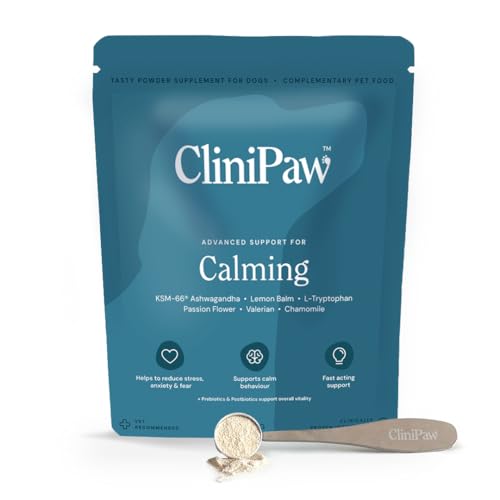




Recognising the signs that indicate a visit to a veterinary clinic can make all the difference in your furry companion’s health. If your pet is exhibiting persistent lethargy or a noticeable change in behaviour, it’s crucial to consult a professional. Sudden bouts of excessive drinking or urination could signal underlying issues that require immediate attention.
Pay close attention to your pet’s eating habits. A sudden loss of appetite or difficulty in swallowing may suggest a need for examination. Vomiting or diarrhoea that lasts for more than a day warrants urgent evaluation, as these symptoms can lead to dehydration and further complications.
Physical signs such as limping or difficulty in movement should not be ignored. Injuries might not always be apparent, and a thorough check-up can help identify fractures or other injuries. Additionally, any unusual growths or lumps that appear on the skin should be assessed by a professional to rule out serious conditions.
Regular check-ups are also beneficial, even when your pet seems healthy. Vaccinations, dental care, and general health assessments are key to maintaining long-term wellbeing. Remember, being proactive about health can prevent minor issues from developing into major problems.
Signs of Illness in Canines
Watch for sudden changes in behaviour or appetite. If a furry friend refuses food for more than a day or exhibits lethargy, it’s time to seek professional help. Changes in water consumption should also raise concerns; drinking significantly more or less can indicate underlying issues.
Physical Symptoms to Observe
- Vomiting or diarrhoea lasting more than 24 hours.
- Persistent coughing or difficulty breathing.
- Swelling or pain in the abdomen.
- Visible signs of injury, such as limping or bleeding.
Behavioural Indicators
- Excessive scratching or biting at the skin.
- Withdrawal from social interactions.
- Changes in sleeping patterns or excessive panting.
Regular check-ups are crucial. Keep up with vaccinations and preventive care to avoid serious health issues. If considering dietary changes, ensure the new food is suitable by checking recommendations like the best raw dog food for pomeranians. This can contribute to overall health and well-being.
Identifying Signs of Illness in Your Canine Companion
Watch for sudden changes in behaviour. If your furry friend becomes unusually lethargic, avoids interaction, or shows reluctance to engage in favourite activities, it could indicate discomfort or sickness. Pay attention to their energy levels; a noticeable drop can be a red flag.
Monitor eating and drinking habits closely. A sudden loss of appetite or excessive thirst may signal health issues. If meals are consistently ignored or there’s an increased urge to drink, it’s time to investigate further.
Physical Symptoms to Observe
Examine for any signs of distress. Excessive scratching, licking, or biting at certain areas might suggest allergies or skin infections. Keep an eye on their coat; dullness or excessive shedding could also be cause for concern.
Watch for changes in bathroom habits. Diarrhoea or constipation lasting more than a day requires attention. Additionally, blood in urine or stool is a serious issue that should prompt immediate action.
Respiratory and Digestive Issues
Listen for unusual sounds while breathing. Coughing, wheezing, or laboured breathing can indicate respiratory distress. If your companion is vomiting repeatedly or showing signs of discomfort after eating, seek advice without delay.
Trust your instincts. If something feels off, don’t hesitate to consult a professional. Early detection often leads to better outcomes for our beloved pets.
Understanding Vaccination Schedules and Boosters
Vaccination timelines for canines are crucial for maintaining health. Puppies usually receive their first vaccinations at six to eight weeks. This initial round often includes core vaccines like parvovirus, distemper, and adenovirus. Following this, a series of boosters is given every three to four weeks until around 16 weeks of age. This ensures the immune system is adequately primed against these diseases.
After the puppy phase, adult canines typically require vaccinations every one to three years, depending on the vaccine type and local regulations. For instance, rabies vaccinations are required by law in many areas and generally need renewal every three years. In contrast, some vaccines may need annual boosters, such as Bordetella, especially for dogs that frequently interact with others in social settings.
Regular discussions with a trusted veterinarian can clarify specific needs based on lifestyle and risk factors. For example, if a canine often visits dog parks or attends daycare, additional vaccines may be recommended. Owners should keep detailed records of all vaccinations to ensure compliance and maintain health.
Monitoring for reactions post-vaccination is also key. Common side effects can include mild lethargy or a slight fever, but any severe reactions, such as difficulty breathing or swelling at the injection site, should prompt immediate veterinary attention.
Staying informed about vaccination schedules helps prevent outbreaks of preventable diseases, safeguarding not only individual pets but also the wider canine community. Regular check-ups are an excellent opportunity to discuss any concerns and adjustments needed in the vaccination plan.
Recognising Behavioural Changes that Require Attention
Noticing shifts in behaviour can be key to identifying issues. If a pet that is usually playful starts to withdraw or seems unusually lethargic, this could signal discomfort or illness. Keep an eye on their energy levels; a sudden drop might indicate a health problem.
Changes in eating habits are telling. If a previously enthusiastic eater suddenly loses interest in meals or starts eating less, it warrants a closer look. Similarly, increased thirst or changes in bathroom habits, such as more frequent urination, can be signs of underlying conditions.
Vocalisation is another important indicator. An increase in barking, whining, or growling may reflect stress or pain. Sharp changes in how a pet responds to familiar situations can be alarming; for instance, if a previously friendly companion becomes aggressive or fearful, it could indicate distress.
Physical signs shouldn’t be overlooked. Observing your furry friend for any limping, unusual posture, or difficulty with movement is essential. Noticing any changes in coat condition, like excessive shedding or bald patches, can also be significant.
Engaging in regular observation can make all the difference. Pay attention to subtle shifts; they often precede more serious issues. If you notice any concerning changes, seeking professional advice is wise. Trust your instincts–if something feels off, it’s better to err on the side of caution.
Evaluating the Need for Routine Check-Ups and Preventative Care
Schedule regular examinations every six to twelve months for optimal health management. These visits play a key role in identifying potential health issues before they escalate. For instance, during a routine appointment, a vet can detect dental problems, skin conditions, or weight concerns that might otherwise go unnoticed.
Pay attention to breed-specific health risks. Certain breeds are predisposed to particular illnesses; thus, tailoring the check-up schedule based on breed can enhance early detection. For example, large breeds may require more frequent evaluations due to joint issues, while smaller breeds might need closer monitoring for dental health.
Vaccinations and parasite control are crucial components of preventative care. Ensure vaccinations are up-to-date according to the vet’s recommended schedule. Additionally, regular treatments for fleas, ticks, and worms are paramount to maintaining well-being and preventing serious diseases.
Consider lifestyle factors. If an animal is highly active or exposed to other pets, more frequent visits may be warranted. Likewise, older companions may benefit from semi-annual check-ups to monitor age-related conditions. Keeping in touch with your vet about any lifestyle changes can guide these decisions.
Utilise technology to track health metrics. Many pet owners now use apps to monitor weight, activity levels, and even dietary habits. Sharing this information with a veterinarian can provide insights that inform preventative care and necessary adjustments to routines.
Lastly, don’t overlook the significance of preventative dental care. Regular dental cleanings can prevent serious oral diseases that could affect overall health. Discuss options for at-home dental care and professional cleanings with a veterinarian.
Staying informed and proactive ensures the happiest and healthiest life for your furry friend. If you’re considering investments in tools for home care, check out the best budget air compressor for airbrush for some excellent options that can also be used for grooming needs.







